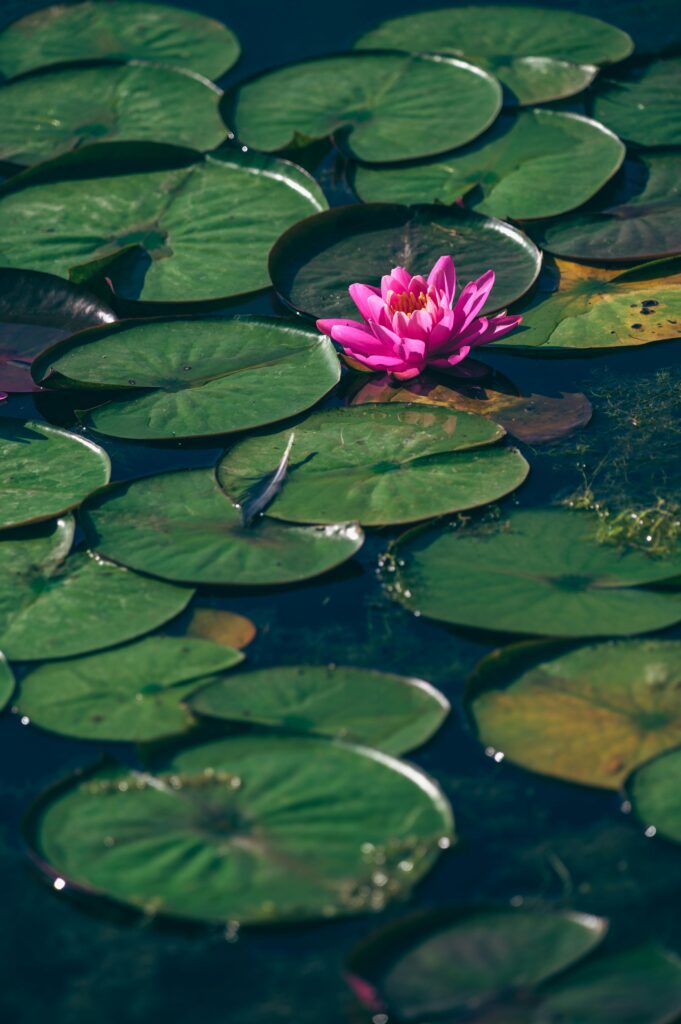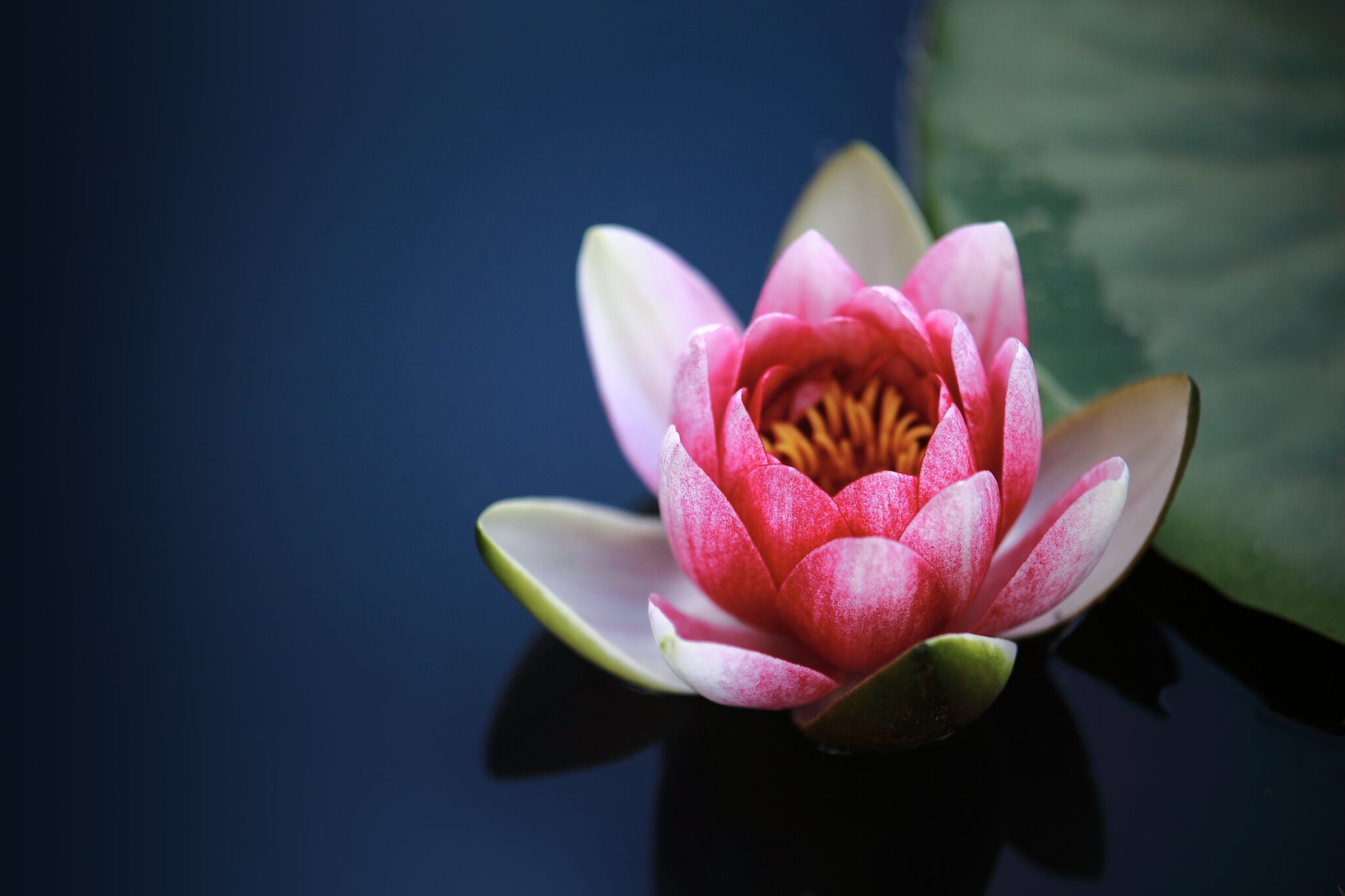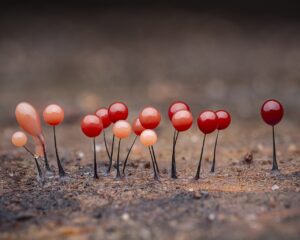As temperatures rise, we’re all looking for opportunities to cool off. The most refreshing spots in the Garden on hot summer days are our many beautiful water features, complete with fountains, waterfalls, and blissful blooming water lilies.
You can recreate the experience on a smaller scale in your own backyard with water features and aquatic plants for a lot less effort than you might think. Horticulturist Maddie Fay recently did a video on small water features and water lilies for the Garden’s social media. Watch here to get great tips on adding a pond or fountain to your outdoor space–plus the benefits of water features for area wildlife such as birds, insects, frogs and lizards.
Fay offered us more tips to get you started. First, water features don’t need to be large or permanently installed in your landscape. “A lot of people are using the 30-gallon wooden half-barrels that are sold at home centers,” said Fay. “Fill it up with a hose and you’ve got a water feature.”

For a finishing touch, add a solar-powered fountain that will provide the delightful sound of trickling water. Then fill a planter with soil, set it in the container and fill it with water-loving plants.
Fay recommends two plants that grow well locally. Elephant ear (Colocasia) is a tropical perennials with large, dramatic leaves; papyrus (Cyperus papyrus) is a grass-like plant with long, straight stems with frilly tops. Both can grow in fully submerged pots that sit just below the water line. Both of these plants can usually be found at local garden centers.
Hardy water lily (Nymphaea) needs deeper water to grow, with the soil 12 to 24 inches below the surface. The plants are available in a wide variety of colors and thrive in our hot summers. Fay warns that not all garden centers carry water lilies, so look for a nursery that sells aquatic plants.
Fay also warns gardeners to be careful with the sorts of aquatic plants that are sold for indoor aquariums. “Many of them can be highly invasive, so you want to keep them inside and out of your pond,” Fay says.
Even small water features will attract birds, lizards, frogs and insects, creating a welcome oasis for backyard wildlife. They can also attract less welcome insects like mosquitos–but there’s an easy way to put a stop to these pests. “Look for mosquito dunks,” says Fay. “These are little donut-shape tablets that you add to water. They contain a bacteria that targets soft-bodied insects like mosquitos. They are safe for fish, amphibians, birds, and humans, so you don’t have to worry about hurting wildlife. They’re something we use really frequently at the Garden.”
Consider adding a micro-oasis to your own backyard with a small water feature–and let us know how it turns out!





